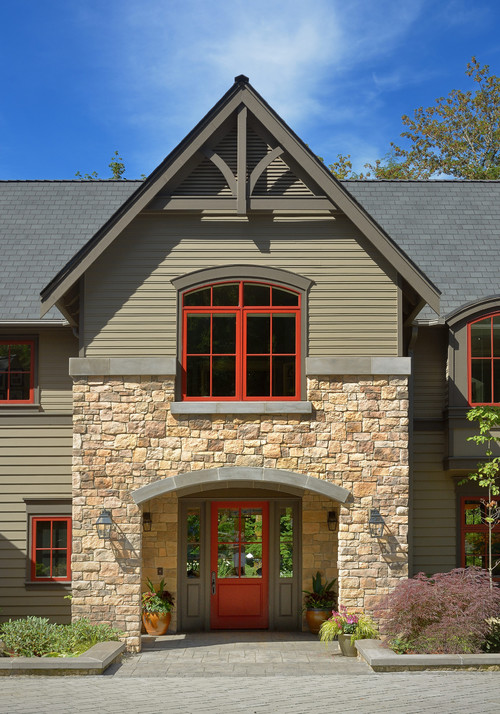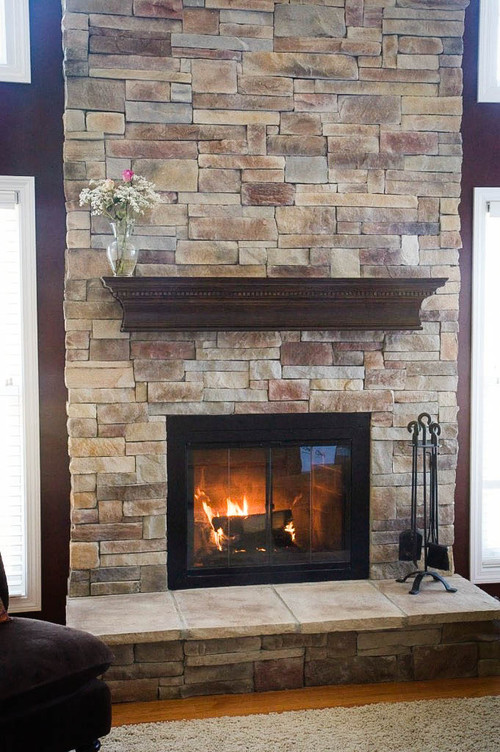
Natural stone is one of the oldest and most beautiful building materials, used for everything from fences to fireplaces and exterior siding. It’s also one of the most expensive building products. As a result, it’s no wonder that manufactured stone veneer (also called faux stone or cast stone) has become an appealing alternative to natural stone.
Artificial stone is made from a mixture of cement, natural aggregates, and pigments. The end product is convincingly realistic, especially if the molds are cast from natural stone pieces.
With a wide range of interior and exterior applications, manufacturer stone veneer can substantially elevate a home’s appearance and provide a solid return on investment.
For example, according to Remodeling Magazine’s 2020 Cost vs. Value Report, if you replace 300 square feet of vinyl siding running along the bottom third of a street-facing façade with manufactured stone veneer, you can expect to recoup nearly 96 percent of the project’s cost.

Artificial veneers are usually installed one individual “stone” at a time, using mortar. They can, however, come in small panels with several “stones” arranged together.
Artificial stone veneer siding is long-lasting and durable. Manufacturers’ warranties range from 20 to 75 years. If properly installed, faux stone veneer siding is maintenance-free and more fire-resistant than wood or vinyl siding.
It’s also a versatile building product. Since stone veneers are substantially lighter, they can be used in applications that would not support the weight of natural stone, including your home’s entire exterior.
In addition to being a less expensive material, manufactured stone veneers are also more affordable in terms of labor costs to install, compared to natural stone.
No exterior house siding is watertight, and manufactured stone siding is no exception.
Moisture problems can occur if stone veneer siding is not installed correctly, and water becomes trapped behind the veneer. Common issues include improper backing materials, missing flashings, and insufficient sealant caulking around windows, doors, vents, and other cut-outs.
Poor installation can lead to significant problems, including water leaks, moisture accumulation between exterior and interior walls, mold, wood rot, and structural damage. Improper installation can lead to thousands of dollars in repairs.
In terms of cost, manufactured stone veneer is less expensive than natural stone, but it still costs substantially more than vinyl and several other siding options.
If you’re interested in buying a home that is partially or fully sided with manufactured stone veneer, make sure a reputable home inspector tests for moisture levels behind the veneer before purchasing. By the time problems surface, the damage can be extensive and expensive to correct.
If you want to update your current home’s curb appeal with faux stone, learn more about common issues with flashing, water retention, and joint sealants around windows, doors, and vents so you can discuss this with your contractor. The Masonry Veneer Manufacturers Association offers a detailed installation guide.

Stone veneers are also an excellent option for many DIY-friendly interior projects. Consider using it for accent walls, kitchen backsplashes, or to upgrade a tired fireplace facade.